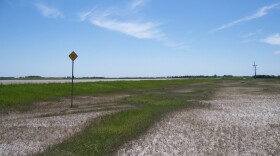I recently read an article about the native grasslands in Canada and the birds that depend upon them.
Both grasslands and birds are rapidly decreasing. Less than 15% of the native grasslands in Canada remain. Most of this loss is due to changes in land use, much of which is converted to cropland. The decline continues at the rate of 457,000 acres per year, and in the last 50 years, grassland birds in Canada have declined by 60%.
To address the issue, Birds Canada — with support of groups including the Saskatchewan Stock Growers Foundation, Nature Conservancy of Canada, and Conservation Trust — has developed the Bird-Friendliness Index.
The index is an indicator of biodiversity, and provides a measure of how many birds are on the farm or ranch and their conservation status. They are also working on new ways to reward farmers and ranchers for benefiting the birds and of course preserving the grasslands.
As one farmer stated, “Opportunities for farms like ours to be rewarded for the biodiversity and other ecological goods and services we are providing will help accelerate the adoption of practices that help birds.”
One of the birds mentioned in the article is the chestnut-collared longspur. A chestnut-collared longspur could easily be dismissed as a sparrow. However, the males of these sparrow sized birds have a quite noticeable rusty nape, or back of the head. They also have a black belly, yellowish throat, and the outer tail feathers flash white when the bird is in flight. Like many other birds, the females are rather drab and streaked a brownish gray.
Chestnut-collared longspurs are ground nesters, and interestingly often nest next to a cow pie. It's as though that location gives them a little extra protection from nest predators. Nonetheless, populations of the species have declined considerably in North Dakota and Canada, due to habitat loss.
Both North Dakota and Canada continue to lose native grassland to other land uses. And along with it goes not only the longspurs, but all the other associated plants and animals that are a part of it. Hopefully the Meadowlark Initiative in North Dakota and the Birds Canada effort can help conserve native grassland communities.





